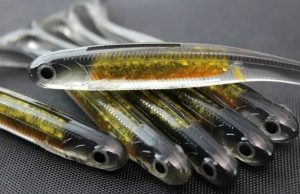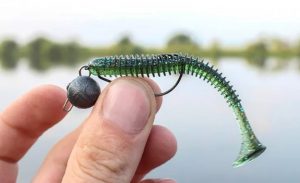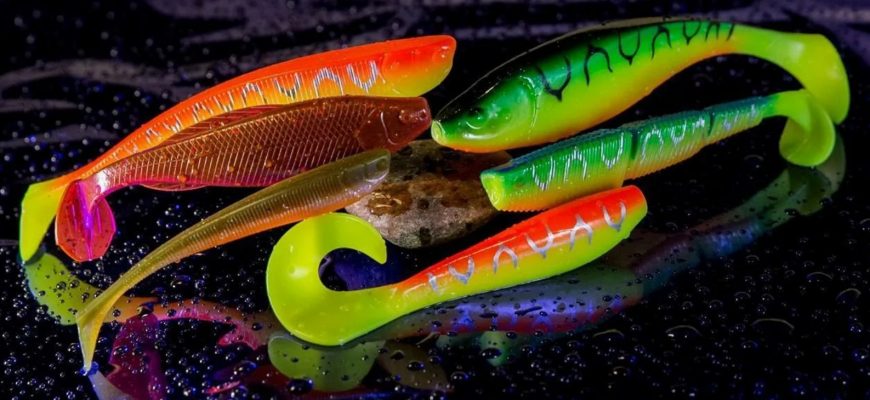Soft plastic baits are a popular and effective type of fishing lure used by anglers around the world. Made from soft and flexible materials such as rubber or silicone, these lures come in a variety of shapes, sizes, and colors, and can be used to catch a wide range of fish species. In this article, we will explore the world of soft plastic baits and provide tips on how to use them to catch more fish.
- Overview and Description of Soft Plastic Baits
- Why Soft Plastic Baits are Popular Among Anglers
- Types of Soft Plastic Baits
- Various Rigging and Attachment Methods
- Water Condition and Temperature
- Fishing Techniques for Soft Plastic Baits
- Fishing Locations for Soft Plastic Baits
- Tips for Using Soft Plastic Baits
Overview and Description of Soft Plastic Baits
Soft plastic baits, also known as soft lures, are fishing lures made of soft and flexible materials that mimic the appearance and movement of live baitfish or other aquatic creatures. These baits are available in many different shapes and sizes, from small grubs and worms to large swimbaits and creatures. They can be rigged in various ways and used in different fishing techniques such as jigging, Texas rig, Carolina rig, drop shot, wacky rig, and more.
Why Soft Plastic Baits are Popular Among Anglers
Soft plastic baits have become increasingly popular among anglers due to their versatility, realism, and effectiveness in catching a variety of fish species. These lures can be used in both freshwater and saltwater environments and can be fished in different depths and water conditions. Additionally, they are relatively inexpensive and can be reused multiple times, making them a cost-effective option for anglers.
Types of Soft Plastic Baits
Soft plastic baits can be divided into several categories based on their design and purpose. These include:
- Vertical Soft Plastic Baits: Vertical soft plastic baits are designed to be fished vertically, either by jigging or dropping them straight down to the bottom. They are typically slender and elongated in shape and come in a variety of sizes and colors.
- Suspended Soft Plastic Baits: Suspended soft plastic baits, also known as jerkbaits, are designed to be fished in a suspended or twitching motion. They are often shaped like baitfish or other prey species and come in a variety of colors and sizes.
- Topwater Soft Plastic Baits: Topwater soft plastic baits, also known as surface lures, are designed to float on the surface of the water and create a commotion that attracts fish. They can be shaped like frogs, insects, or other prey species and come in a variety of colors and sizes.
- Soft Plastic Baits on Jigheads: Soft plastic baits on jigheads are a popular type of soft plastic bait. These lures consist of a soft plastic body attached to a lead jighead and are typically used in combination with a casting or spinning rod.
- Features of Using Soft Plastic Baits: Using soft plastic baits requires some knowledge and experience to ensure their effectiveness. Here are some features to consider when using soft plastic baits:
- Choosing the Right Size and Color: Selecting the appropriate size and color of soft plastic bait is crucial to attract the fish you want to catch. Consider the size of the baitfish in the area and choose a color that matches the natural prey in the water.

Various Rigging and Attachment Methods
Soft plastic baits can be rigged and attached in different ways, depending on the type of lure and the fishing technique used. Some popular methods include Texas rig, Carolina rig, drop shot, wacky rig, and more.
Water Condition and Temperature
The water condition and temperature can affect the way soft plastic baits are presented and how fish respond to them. In colder water, fish may be less active and require a slower presentation, while in warmer water, fish may be more aggressive and require a faster presentation.
Fishing Techniques for Soft Plastic Baits
There are various fishing techniques that can be used with soft plastic baits. Some of the most common techniques include:
- Jigging: Jigging is a fishing technique that involves vertically moving the lure up and down in the water. To jig with a soft plastic bait, you need to cast your line and let the lure sink to the bottom. Once it hits the bottom, start moving the rod tip up and down to make the bait move in a lifelike manner.
- Texas rig: The Texas rig is a weedless fishing technique that involves attaching the soft plastic bait to a hook and placing a bullet-shaped weight on the line above the bait. The weight helps to sink the bait, and the weedless design of the rig allows the bait to be fished through weeds and other underwater obstacles.
- Carolina rig: The Carolina rig is similar to the Texas rig, but it uses a different type of weight and has a longer leader. This allows the bait to move more freely in the water, making it a good choice for fishing in deeper water.
- Drop shot: The drop shot is a finesse fishing technique that involves attaching the soft plastic bait to a hook and suspending it off the bottom of the water column using a weight. The technique is commonly used for fishing in deep water or for targeting finicky fish.
- Wacky rig: The wacky rig is a simple but effective way to fish with a soft plastic bait. It involves hooking the bait through the middle, which causes it to flutter and move in a natural way in the water. The wacky rig is especially effective for catching bass in shallow water.
Fishing Locations for Soft Plastic Baits
Soft plastic baits can be used in a variety of fishing locations, including:
- Rivers: Soft plastic baits are effective for fishing in rivers, especially for species like trout, bass, and walleye. Look for areas with slower-moving water or eddies where fish may be hiding.
- Lakes: Lakes are great places to fish with soft plastic baits, especially for bass, crappie, and other panfish. Try fishing around structures like weed beds, drop-offs, and submerged trees.
- Ponds: Ponds can be excellent places to fish with soft plastic baits, especially for bass and bluegill. Look for areas with structure like rocks or logs, or try fishing along the edges of lily pads or other aquatic vegetation.
- Reservoirs: Reservoirs are large bodies of water that can be challenging to fish, but soft plastic baits can be effective for catching a variety of species. Try fishing around submerged trees, points, or other areas where fish may be holding.

Tips for Using Soft Plastic Baits
Here are a few tips and recommendations for using soft plastic baits:
- Choose the right size and color: The size and color of the soft plastic bait you choose can make a big difference in whether or not you catch fish. Be sure to match the size and color of your bait to the species you are targeting and the conditions you are fishing in.
- Experiment with different rigging techniques: There are many different ways to rig a soft plastic bait, so don’t be afraid to experiment to find the method that works best for you.
- Store your baits properly: Soft plastic baits can be damaged if they are stored improperly. To keep your baits in good condition, store them in a cool, dry place and keep them away from direct sunlight.
- Keep your hooks sharp: A dull hook can make it difficult to catch fish with a soft plastic bait, so be sure to keep your hooks sharp and replace them if necessary.
Soft plastic baits are a versatile and effective option for anglers of all skill levels. By choosing the right size, color, and style of soft plastic bait, anglers can effectively target a wide variety of fish species in different water conditions. Proper rigging and presentation of the bait, as well as the use of appropriate fishing techniques, can greatly improve the chances of a successful catch.
It is important to note that soft plastic baits are not indestructible and can become damaged or ineffective over time. It is recommended to store them properly and replace them when necessary to maintain their effectiveness.
In conclusion, soft plastic baits are a valuable addition to any angler’s tackle box. With their versatility, effectiveness, and ability to mimic natural prey, they have become a popular choice for many fishing enthusiasts. By following the tips and techniques outlined in this article, anglers can increase their chances of success and enjoy the thrill of the catch.
